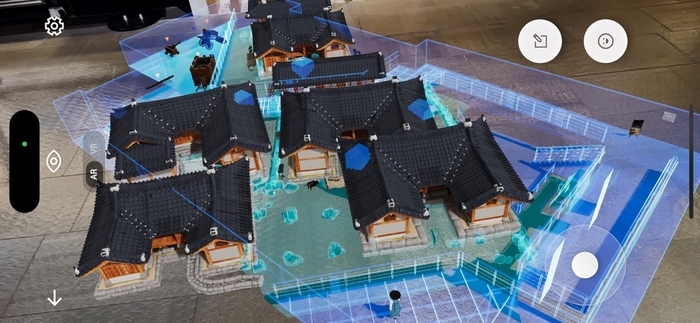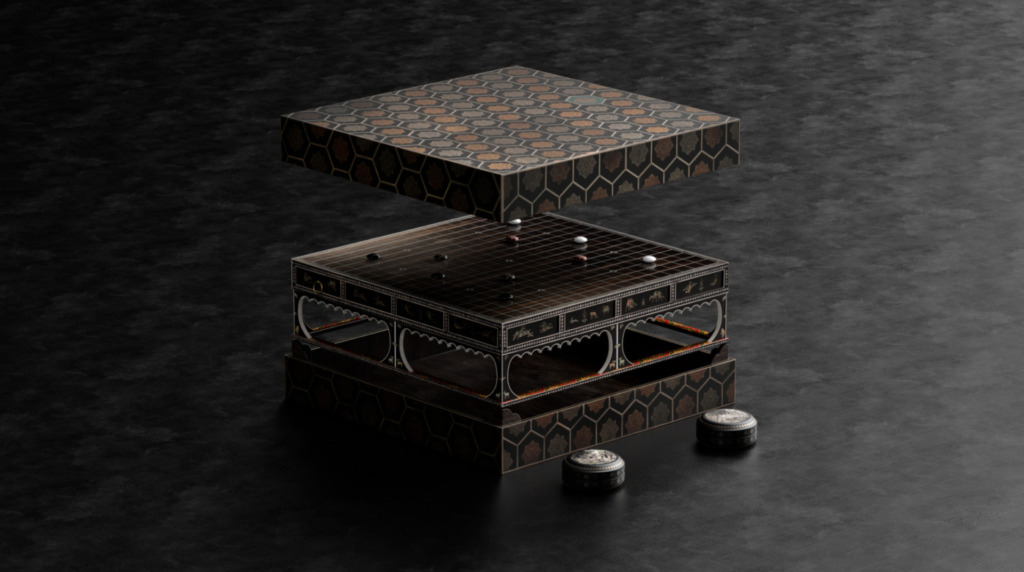A new form of future museum proposed by realistic content
Previous digital heritage was limited to 'converting' real objects into various digital formats such as text, images, video, audio, and graphics, and constructing and storing them as a database (DB), but recent digital heritage is 'utilization'. It is significant in that it even suggests ‘possibilities’.
Previously, we introduced a case where digital heritage media art using projection mapping technology allows people to appreciate cultural heritage rather than just remembering it as a boring and boring 'thing of the past'. The intersection between digital and cultural heritage is not only that. Cultural heritage is converted into digital data and used for restoration in the event of loss in the future, and it is also reprocessed into cultural content so that modern people can more fully appreciate the value of original cultural assets.
In keeping with this trend, ‘museums’ are also changing. Previously, museums had been limited to a space where original cultural assets were displayed, but now their role has been expanded to allow the appreciation of cultural heritage once again realized through digital means.
Digital restoration of Joseon government office ‘Gungisi’

The city of Seoul successfully restored the Gungi City ruins, which are currently lost and cannot be viewed, through technology. Gungi City is the central government office of the Joseon Dynasty that was responsible for manufacturing military supplies during the Joseon Dynasty, including the world's first rocket weapon, 'Singijeon'.

It was excavated during the construction of Seoul City Hall's new office building in the past and is currently operating the 'Gungisi Relics Exhibition Room' in the basement of Seoul City Hall. The 'Gungisi Project' in collaboration with other companies was successfully completed and the 'Gungisi' restored through AR/VR. announced. Through the ‘Heritage Metaverse Coexistence’ app, you can look around the interior and exterior of Gungi City buildings in augmented reality. In addition, you can even experience the weapon production process and firing artillery and gun barrels.
The comfort of a gentle smile at Incheon Airport, real-life content from Banga Sasayusang
As mentioned earlier, content restored as digital heritage can replace the function of a ‘museum’ anywhere, even without displaying original cultural assets. In particular, in August 2022, there was 'Banga Sayusang realistic content' that made us feel our history and identity through digital heritage at Incheon Airport. The immersive content of the Bangasayusang that was screened at Incheon Airport is significant in that it presented the sophistication and beauty of the Bangasayusang and introduced the 'most Korean' cultural heritage to foreigners visiting Korea and the Korean people.
Old paintings come to life, digital portraits
The National Museum of Korea proposes another exhibition method that allows you to directly interact beyond just looking at and appreciating the cultural assets themselves. While I was able to capture my face in the Joseon Dynasty painting style, I was also able to recreate portraits of our ancestors like photographs. At this time, the two AIs draw elaborate images as if competing. Generative Adversarial Network (Style GAN) The technology was used. In order to prevent existing Western-centered learning data from being reflected in the results, we succeeded in restoring more realistically by learning the portraits of Korean actors.
The key to restoring cultural heritage in digital space is firstly the technology to accurately embody the unique form of the cultural heritage, and then the sense of drawing and utilizing its value with a modern eye. Realistic content technology has been actively used to help modern people enjoy cultural heritage in a more diverse way without harming its essential value and meaning.
As efforts to develop new historical tourism resources through public-private cooperation continue in Korea, the media art group Curz (CUZ) is also adding strength to exploring our roots through excellent implementation technology.
Baekje ruins revived by media art group Kurz (CUZ)

Mokhwajadangiguk (wooden painting and rosewood office)
This is a Baekje Go board, which means 'a Go board with pictures carved on purple wood'. The Mokhwajadan-gi-guk is a gift that King Uija sent to the Japanese rulers as a gift to win Japan over to his side when he felt a sense of crisis when he saw Silla rapidly approaching Tang. A sliding mechanism was installed inside the drawer so that when one side is opened, the other side also opens, and each piece is decorated with delicate decorations such as birds and elephants carved into it, capturing the beauty of Baekje, a powerhouse in maritime trade.

Creative media art company Cuz (CUZ) has digitally restored historical relics of Baekje, a cultural powerhouse in East Asia from 2,000 years ago. The delicate beauty of the cotton rose dangi soup described above has been digitally realized again through the production technology and implementation capabilities of Kurz (CUZ). The unique colors, decorative patterns, and details have been restored digitally, allowing more people to appreciate the beauty of our cultural heritage without restrictions of time and space.

concluding words
Our cultural heritage is disappearing into history. The way we enjoy cultural heritage is also changing in many ways so that the value of cultural heritage, which contains the philosophy of our ancestors and our unique identity, can be more actively conveyed to us living in modern times. With pride in our culture, it is essential to not only observe the original cultural heritage and the flow of history in depth, but also make efforts to ensure that people know about it and enjoy it. We hope that the brilliant value of our cultural assets will continue to shine through the artistry and technology of media art group Cuz (CUZ).
Tags
- AI, AR, CUZ, LOVE EARTH, media-art, SWITCH OFF, VR, XR, media art, Curze
